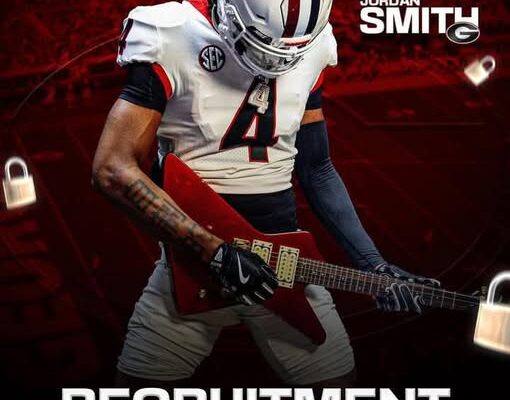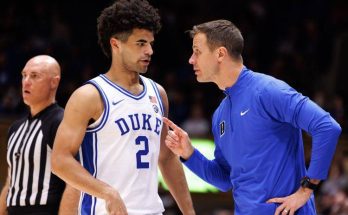In the fast‑shifting landscape of college football, few things carry as much weight with fans, broadcasters, and advertisers as a high “watchability” rating. It’s a blend of projected performance, narrative intrigue, dynamic talent, competitive scheduling, charismatic leadership, and media buzz. For the 2025 season, South Carolina finds itself at the top of many of these categories, and one analytics model in particular—KFord Ratings—has placed the Gamecocks at #1 nationally, with a watchability score of 8.54, edging out Florida, LSU, and Texas A\&M ([garnetandcocky.com][1]). That label—from an objective algorithm built specifically to distill excitement and engagement into a number—offers a perfect gateway to understanding why South Carolina has become the season’s must‑watch program.
Much of the early attention rests on tangible momentum. In 2024, the Gamecocks not only exceeded expectations, they blew past them. A 9–4 finish, a top‑25 ranking (19th in both the AP and Coaches polls), and signature victories against ranked opponents like Texas A\&M and Clemson cemented that success ([gamecocksonline.com][2]). Under fourth‑year head coach Shane Beamer, South Carolina went from preseason longshot to late‑season powerhouse—rising further in conference play than any team that preseason . That kind of dramatic turnaround captures attention, and for viewers banking on watchable football, trendlines matter.
KFord Ratings’ watchability index, and other similar frameworks, weigh not only success but the “compellingness” of a team’s story: Are they good? Are they likely to face off against other strong teams? Are they on the cusp of something bigger? South Carolina checks all those boxes. Their projected 2025 roster includes dynamic seventh-year quarterback LaNorris Sellers (the SEC Freshman of the Year), rising edge rusher Dylan Stewart, explosive transfer running back Rahul Faison, and national award‑winner Kyle Kennard anchoring the defense ([collegefootballnetwork.com][3], [dailygamecock.com][4]). That’s talent—plus youth—that promises fast tempo, big plays, and high stakes.
But raw talent only fuels interest when paired with opportunity, and South Carolina’s 2025 schedule is brutally tantalizing. According to College Sports Network, the slate will include a neutral‑site opener against Virginia Tech in Atlanta, followed by SEC dates with Alabama, Oklahoma (a non‑conference outlier), Kentucky, LSU, Ole Miss, Missouri, and Texas A\&M. The toughest stretches come in October, when they will face LSU, then host Oklahoma and Alabama, and close out that window on the road at Ole Miss ([collegefootballnetwork.com][3]). If Kingston‑in‑waiting Sellers and Co. can navigate that brutal gauntlet, the narrative of “Cinderella becoming contender” will grip casual and die‑hard fans alike.
Part of the Gamecocks’ appeal is their explosive, all‑field style of play. Offensively, Sellers averaged over 60% completion in part‑time play behind Spencer Rattler in 2024 and also rushed for over five yards per carry ([collegefootballnetwork.com][3]). He also set school records for QB rushing yards and took home SEC Freshman of the Year honors ([reddit.com][5]). With Faison adding over 1,100 rushing yards last year, the backfield provides a balance that keeps defenses guessing . On defense, Kennard snagged the Bronko Nagurski Award and SEC Defensive Player of the Year, while Dylan Stewart brings disruptive edge rushing ([gamecocksonline.com][2]). Special teams, often the most overlooked unit, remain elite under coach Pete Lembo, as evidenced by national rankings in blocked kicks, returns, and efficiency ([en.wikipedia.org][6]). That three‑phased strength offers unpredictable, high‑action outcomes every Saturday.
Narrative plays are essential, too. Beamer Ball 2.0—Shane Beamer’s philosophy of aggression, special teams firepower, and late‑season surges—has resonated since he inherited the job ([statsperform.com][7], [en.wikipedia.org][8]). In 2024, the Gamecocks peaked in November, delivering upset after upset to close the year and earning a national “November to remember” stamp ([en.wikipedia.org][8]). That turnaround story—embattled program rises through grit and culture—is a magnet for casual viewers who tune in when it feels like something big is brewing.
That emotional connection strengthens with the fan base. Williams‑Brice Stadium sold out every game in 2024 for the first time since 2013, with average attendance exceeding 102% capacity ([gamecocksonline.com][9]). Across broadcast and streaming platforms, their game viewership broke records: four games topped 4 million viewers, including Alabama (6 million) and Texas A\&M (5.56 million), with the Cheez‑It Citrus Bowl hitting 4.26 million ([gamecocksonline.com][9]). The program also led the SEC in NCAA Graduation Success Rate with 95% ([gamecocksonline.com][10]), reinforcing that there’s more substance behind the buzz. It showed growth on the digital front, too: over 162 million total social impressions and 77 million video views in 2024 ([gamecocksonline.com][9]). Netflix even green‑lit a behind‑the‑scenes docuseries highlighting the program this summer . When a program hits both the stadium and streaming metrics, it validates the analytics—people are tuning in.
The coaching staff and culture add further appeal. Shane Beamer has cultivated what insiders call a family‑oriented culture, emphasizing brotherhood, openness, and the freedom to make mistakes ([en.wikipedia.org][8]). That intangible fosters underdog loyalty—fans love rooting for the gritty, close‑knit group that believes in itself. Beamer also leverages social media masterfully, building engagement and energy that extends beyond game days . Alongside him, special teams coordinator Lembo has delivered consistently, collecting national recognition and ranking among the best in the country ([en.wikipedia.org][6]). That attention to often‑ignored game phases signifies well‑rounded leadership to both fans and analysts.
The Gamecocks also boast success in player retention and recruitment. After a 5–7 2023, the entire momentum swung positive when several key seniors elected to stay for 2024, fueled by faith in the program’s trajectory ([dailygamecock.com][4]). The transfer portal additions—particularly Faison and defensive contributors—proved strategic; portal usage helped accelerate their 2024 ascent . Meanwhile, recruiting remains focused on the deep high‑school talent local to South Carolina and surrounding states like Georgia and Florida ([cms.gre.economist.com][11]). That home‑grown core produces cohesion and fervor. When analytics models combine roster depth, incoming talent, and culture, they produce higher watchability outputs.
From a niche data perspective, FPI (ESPN’s Football Power Index) ranked South Carolina’s offense as 19th and defense as 14th for 2025, each jumping over 20 spots from 2024 ([garnetandcocky.com][1], [espn.com][12]). FPI focuses on underlying metrics like efficiency, explosiveness, and opponent adjustment. A significant year‑over‑year improvement signals both a meaningful step forward and an opportunity for narrative growth. All these signals feed into analytics that model engagement—teams with clear upside, backed by measurable progression, pull casual viewers.
Media attention compounds all of this. A South Carolina preview piece in Sports Illustrated declared the Gamecocks are generating “major buzz” ahead of 2025, citing the Sellers‑Stewart tandem and overshadowing defensive losses ([statsperform.com][7], [si.com][13]). College Sports Network dubbed them the “Team to Watch,” pointing to a turning point in the Beamer era and quarterback swagger . Kelley Ford’s KFord Watchability ranks them #1 ([garnetandcocky.com][1]). This alignment between analytics and narrative makes for a powerful draw. For networks looking to schedule games that attract eyeballs, a high watchability ranking combined with media buzz gives confidence.
That combination—on‑field potential, tough opponents, cultural gravitas, fan energy, improved metrics, and media amplification—is the perfect recipe for “most watchable.” Indeed, it’s one thing to be good; it’s another to be compelling. South Carolina has evolved into a story people want to follow, not just a team others have to watch because of reputation.
One element often overshadowed is rivalry. The Palmetto Bowl against Clemson remains one of the most storied in college sports ([en.wikipedia.org][14]). After a 17–14 upset over the Tigers in 2024, South Carolina controls the momentum heading into the next meeting . Rivalry games are natural focal points for viewership spikes; a Gamecock‑Clemson game with narrative arcs swirling around redemption or dominance naturally draws beyond the core fan base. That fixture alone bolsters their watchability.
Lastly, look at the economics. High attendance and sold‑out stadiums (102% capacity), record TV viewership, engagement on digital platforms, and merchandising growth translate into money. That attracts more media investment and ensures the Gamecocks are on prominent networks like ESPN, ABC, and potentially primetime slots. With Netflix docuseries exposure, South Carolina isn’t just a football story—it’s entertainment crossover. When analytics say “most watchable,” networks hear “highest return,” especially when the performance trajectory is upward.
In total, South Carolina’s ascent to the top watchability rating for 2025 isn’t a fluke or wishcasting. It’s rooted in measurable growth: a leap in national rankings, standout individual award winners, offensive and defensive efficiency gains, blockbuster games, fan fervor, and cultivated narrative. Analytics models prioritize those data points—and South Carolina checks every box. When the story begins in adversity (a 5–7 team), climbs through culture (Beamer Ball), peaks via star performance (Sellers, Kennard, Stewart), and confronts a brutal schedule, you get television gold. That mix of drama, unpredictability, and realism is exactly what viewers crave.
If South Carolina nails their schedule and builds off last year’s momentum, they could turn watchability into wins, possibly cracking the College Football Playoff. But even if they don’t, the journey will likely lay claim to one of the most compelling seasons in recent memory. Every model—KFord, FPI, SI, CBS—speaks the same language: there’s something electric about Columbia in 2025. Whether that electricity materializes into championships or close calls, it’ll make great television. So as the cameras roll and Saturdays heat up, one thing’s clear: South Carolina won’t just be playing football—they’ll be performing, narratively and athletically, and the country will be tuning in to see what comes next.


